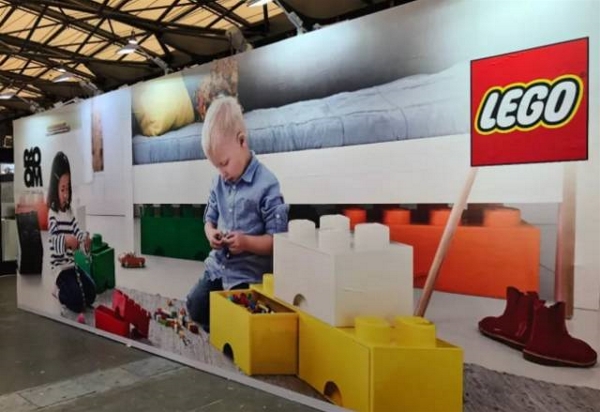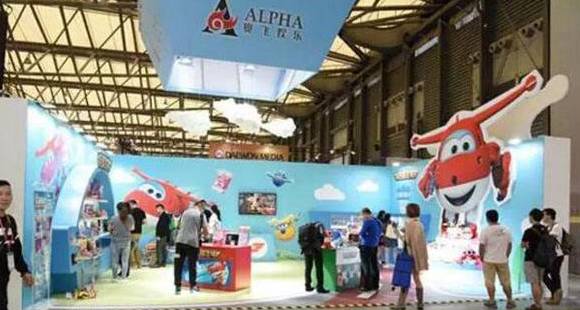The rapid development of local toys in the Chinese toy market has become a dark horse in the industry!
Nowadays, the quality of toys in China has been improved. Innovations have been made in technology, design, function, technology and materials. The technology and fashion elements such as Internet of Things, robots, AR and VR have become popular, especially the Chinese intellectual products that unite Chinese wisdom. It is a concentrated outbreak that successfully leads the industry trend and trend.
First, the undisputed golden age, the toy market broke through 60 billion
The comprehensive two-child policy has been on the road for more than a year. The birth population of the whole country has increased significantly. The new generation of child-rearing families has gradually become the main force of consumption. The domestic and foreign markets for toys and baby products have ushered in a new round of just-needed dividends, and the industry is booming.
After the trend of growth of 17% against the trend last year, the growth rate of China’s toy exports will further increase this year.
According to data provided by the China Toys and Baby Products Association, from January to August this year, China’s toy (large-caliber) exports amounted to 26.393 billion US dollars, an increase of 37.06%. Among them, the export value of the “Belt and Road†countries was 4.962 billion US dollars, an increase of 45.94%; the main export of baby products in China was 17.718 billion US dollars, an increase of 5.71%.
China's domestic market data is also very impressive. From January to August this year, China's toy (large-caliber) imports amounted to 719 million US dollars, an increase of 33.88%; China's main baby products imports amounted to 468 million US dollars, an increase of 9.35%.
There are many positive factors in the domestic market. First, under the encouragement of the two-child policy, the number of births in China increased by 1.91 million in 2016. At the same time, with the improvement of the income level of consumers after the 1980s and 1990s, their idea of ​​educating children is also to hope that children can use products that meet the characteristics of baby growth. Therefore, their investment in this piece will increase. In addition, more and more domestic and foreign brands are paying more attention to the domestic market, investing more new products, better meeting the needs of parents after the 80s and 90s, so that they have more choices.
According to the China Toys and Baby Products Association and GfK (China), China’s toy and baby products market survey data released this year, the scale of China’s toys, baby strollers, child safety seats and baby bottle market will be in 2017. They reached 60.7 billion yuan, 12.3 billion yuan, 6.14 billion yuan, and 5.1 billion yuan respectively, with growth rates of 9.2%, 15%, 35%, and 24.4%, respectively.

Second, the status quo of the main players of Chinese toys
Among the top 5 companies in the domestic toy business market, 3 are local Chinese companies, namely Aofei Entertainment, Yao Ji, and Smart Creative, among which Aofei Entertainment has the highest market share of 5.3%. (Source: Euromonitor, only statistics on toy sales in the Chinese mainland market)
Among the 14 segments, 7 are leading Chinese companies, and some segments of the toy sector occupy a large market share. For example, Aofei occupies the leading areas of movable dolls, outdoor sports toys and remote control toys. In 2016, the market share was 47.3%, 33.1%, and 11.1% respectively; Yao Ji occupied 24.3% of the game puzzle market share.
Local toy companies are not competitive with international toy giants in some segments , and local toy companies are highly competitive. For example , in the field of movable figures, Aofei has a market share of 47.3% far exceeding that of Hasbro , and Hasbro in 2009. -In 2016, the market share did not change much. At the same time, the market share of Aofei continued to rise. In the field of plush toys, Tianheng’s 2.1% market share in the plush toys sector dominated, and the market share grew faster than the disco. Ni is higher. In the sub-sectors such as infant toys, dolls, role-playing and dressing, and toy cars, the international toy giants and local toy companies have little market share.
As previously analyzed in the global competitive landscape, local IP is a trend in the development of global toy IP. As local toy companies are closer to the social and cultural environment, it is difficult for foreign IP to generate cultural resonance.
The sales of the first echelon of Aofei Entertainment and Yaoji Toys increased rapidly. In 2016, the growth rate was 26% and 18% respectively; the second echelon's smart idea was outstanding, and it increased by 25% in 2016; in the third echelon, Bainshi, Xiaobailong, Tianheng, Kaidiwei, Jiaqi Technology The sales of new three-board enterprise toys grew rapidly, with growth rates of 49%, 53%, 49%, 76%, and 39% in 2016, respectively.

Third, local toys have unique development advantages
The main reason is to benefit from cultural resonance and social habits.
Yao Ji, a domestic brand among the top 5 brands, is a poker brand and has a long-term market share in the domestic market. This is related to the past social habits in China. Chess-class leisure and entertainment has a long history in China.
The modern domestic toy enterprises that are developing around IP+ toys, such as Aofei and Smart Motion, have a certain gap with the international toy giants in terms of IP development or operational maturity. However, due to the unique cultural resonance, domestic toy companies can One of the disputes. The market share of Aofei Entertainment increased from 3.4% in 2009 to 5.3% in 2016.
From the many IPs of Aofei Entertainment, we can see the importance of cultural factors. IPs such as "Tai Chi Mouse", "Kung Fu Cuisine" and "100,000 Cold Jokes" have deep roots with Chinese traditional culture. In addition, many good IPs can be derived from Chinese history and culture, such as "Wu Chuan".
China's toy leading enterprises are mainly two types: one is a traditional card company, and the other is a modern toy company that develops around IP.
For toy companies that are developing around IP such as Aofei Entertainment and Smart Ideas, on the one hand, it is necessary to strengthen the development in depth, expand the pan-entertainment industry around IP, fully and rationally develop IP derivatives, and enhance the "chemical reaction" rather than the "physical combination"; On the other hand, the improvement of commercialization ability and accurate decision-making are also top priorities. For IP development, the most important thing is quality. Quality requires time and investment, especially talent input. For Yao Ke and other card companies, on the one hand, we must optimize the advantages of the card, continue to develop new card games and timely innovation of card games; on the other hand, we can moderately diversify and broaden the layout in the field of toy segmentation.

Fourth, for the development path of local small and medium-sized toy enterprises
1. Take the road of differentiation and specialize in vertical fields
For example, Funkco focuses on collecting toys. Funkco does not develop IP, but through extensive cooperation with IP development companies. According to public information, Funko has signed contracts covering more than 10,000 characters, including Star Wars, Golden. The characters in the Girls, the athletes in the National Football League, even Hillary and Trump.
2. Deepen technical advantages and rationally use IP image
Such as VTech, VTech is known as the high-tech in toys. It is a technology-centered enterprise. Its toys combine electronic attributes and educational attributes, mainly for the intellectual development of young children. VTech does not create IP, nor does it focus on IP. The main advantages of its products are in the nature of technology and education.
3. Make full use of channel advantages and marketing methods
Such as McDonald's, it is not a toy producer, there is no technical advantage and no specialization in the toy field, but according to Nutrition Nibbies, McDonald's exports 1.5 billion toys every year through 35,000 stores worldwide. At present, McDonald's has 35,000 stores worldwide, covering 119 countries, and the number of shoppers entering the day is as high as 62 million. McDonald's promoted the sale of toys with its huge channel advantage.
4. Seize the niche consumers with unique creativity
For example, MGA, which competes with Mattel in the field of dolls, MGA successfully broke the doll market dominated by Barbie dolls with Bratz dolls, and once seized 40% of the doll market share. Bratz is known as the "anti-Barbie" wild hoe, compared to Barbie's "Princess Dream", Bratz's rebellious shape is closer to reality. In addition, MGA is also good at capturing the needs of niche consumers. In January 2012, a mother of a child cancer patient launched an event on Facebook, hoping that Mattel would make a bald version of Barbie to support children with cancer. This "beautiful bald Barbie" movement received great attention, and Mattel did not respond in time. In 2013, a limited edition bald Barbie was produced and donated to the American Children's Hospital. MGA quickly launched three bald Braz dolls, three bald Moxie girl dolls, and a bald Moxie boy doll. In addition, MGA also announced that for every doll sold, it will donate $1 to support the "City of Hope" organization for cancer research.
Solid Wood Furniture,Solid Wood Office Furniture,Solid Wood Nightstand,Solid Wood Bedroom Furniture
Hebei Rukai Furniture Co. , Ltd. , https://www.wyrukaifurniture.com